May 31, 2025 | 07:57 GMT +7
May 31, 2025 | 07:57 GMT +7
Hotline: 0913.378.918
May 31, 2025 | 07:57 GMT +7
Hotline: 0913.378.918
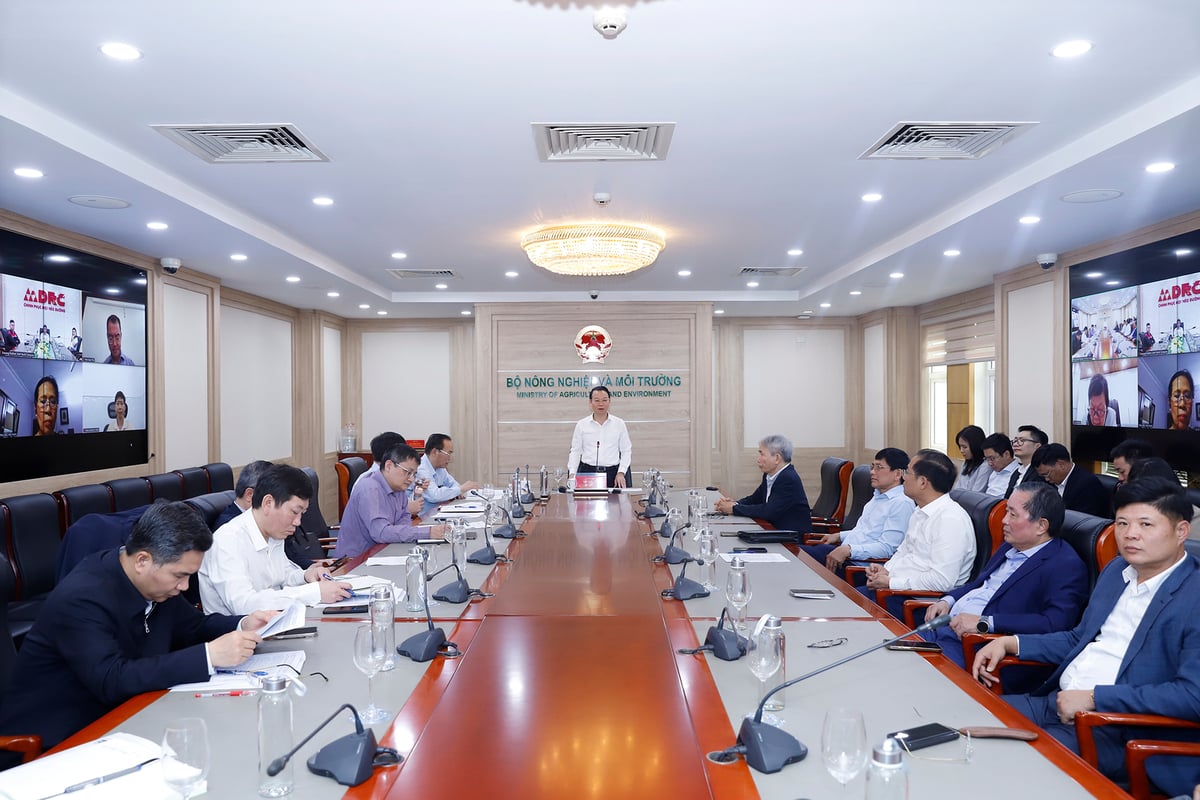
Minister of Agriculture and Environment Do Duc Duy met with agricultural export businesses and associations trading with the U.S. on the afternoon of April 7. Photo: Khuong Trung.
On the afternoon of April 7, Minister of Agriculture and Environment Do Duc Duy chaired a working session with relevant units under the Ministry, as well as major agricultural exporters and industry associations targeting the U.S. market. The meeting took place amid global trade disruptions, following U.S. President Donald Trump's announcement of new reciprocal tariff on April 3.
At the meeting, Minister Do Duc Duy emphasized that both the Ministry and the Government have taken prompt action since President Trump’s announcement of the new tariff measures, which include a 46% tariff rate imposed on Vietnam.
Accordingly, Vietnam is currently seeking to negotiate with the U.S. side to find solutions aimed at reducing this tariff rate. However, the Minister also stressed the importance of preparing for the worst-case scenario, in which the U.S. proceeds with the policy without delay.
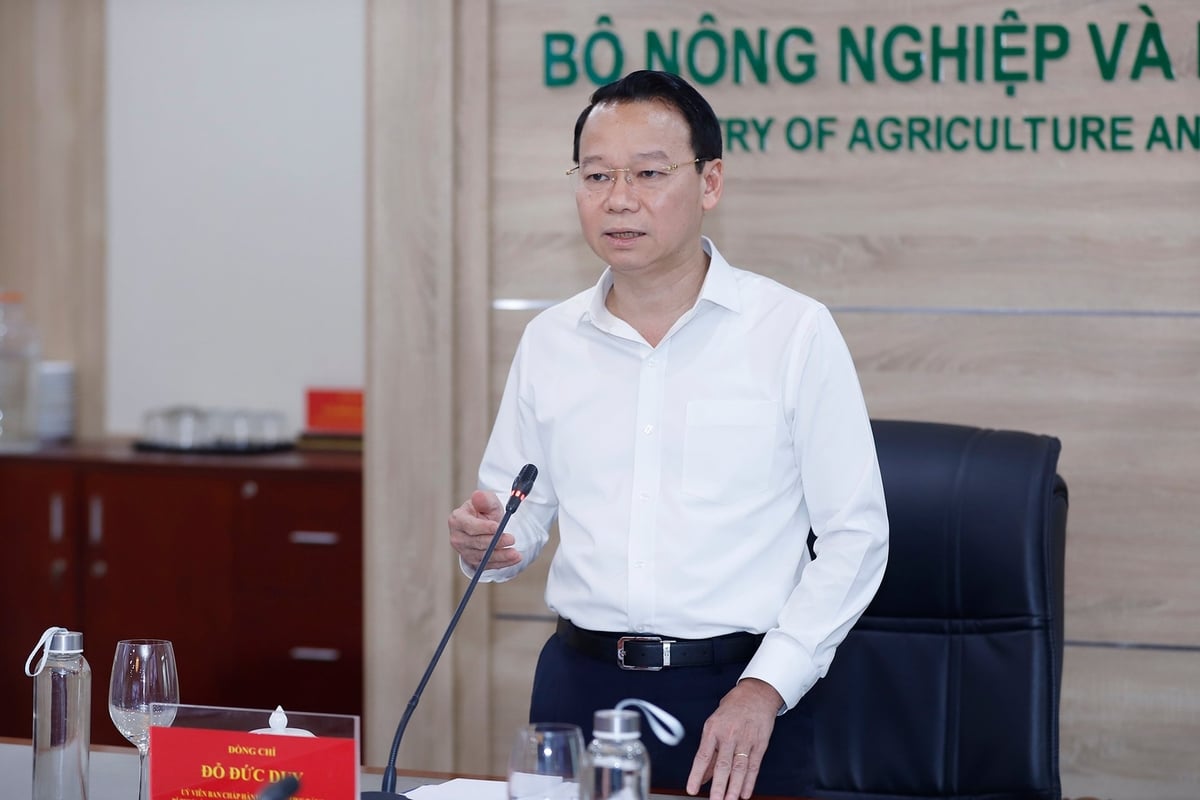
Minister Do Duc Duy emphasized solutions for the scenario in which the U.S. does not negotiate a tariff reduction. Photo: Khuong Trung.
Therefore, during the working session on the afternoon of April 7, Minister Do Duc Duy expressed his desire for businesses and associations to work together with the Ministry to provide an overview assessment of the current situation. Following that, he encouraged open discussion and proposals to find additional solutions to respond to the challenges.
“These solutions could include a government support package for businesses and producers. That’s why the Ministry wants enterprises to share their concerns and expectations for support - whether in the form of tax relief, financial mechanisms, or credit access,” the Minister of Agriculture and Environment suggested.
Minister Do Duc Duy also reiterated that negotiating a tariff reduction is the most desired solution. However, it is necessary to prepare for a scenario in which expectations are not met, and to develop appropriate alternative strategies.
Taking advantage of the remaining time and facilitating shipments before April 9 is the key solution proposed by the Department of Quality, Processing and Market Development (under the Ministry of Agriculture and Environment) during the working session with the Minister and representatives from businesses and associations.
According to Mr. Ngo Hong Phong, Director General of the National Authority for Agro-Forestry-Fishery Quality, Processing and Market Development, in recent years, Vietnam’s exports of agricultural, forestry, and fishery products to the U.S. have consistently exceeded USD 13 billion (with a trade surplus of over USD 10 billion), while imports from the U.S. have been around USD 3 billion annually. In 2024 alone, exports reached USD 14.31 billion, up 25% compared to 2023, and imports amounted to USD 3.44 billion.
In the first quarter of 2025, Vietnam’s exports to the U.S. reached USD 3.21 billion, up 14.9% year-on-year, while imports from the U.S. totaled USD 914 million, an increase of 7.1% compared to the same period in 2024. Key export products over the years have continued to be wood, pepper, cashew nuts, seafood, coffee, and fruits and vegetables.
Mr. Phong noted that the imposition of a flat 10% tariff on all imports into the U.S. would have a direct impact on the overall trade balance between Vietnam and the U.S., significantly affect Vietnam’s agricultural, forestry, and fishery products exports, and negatively influence the growth rate of the agricultural sector in 2025.
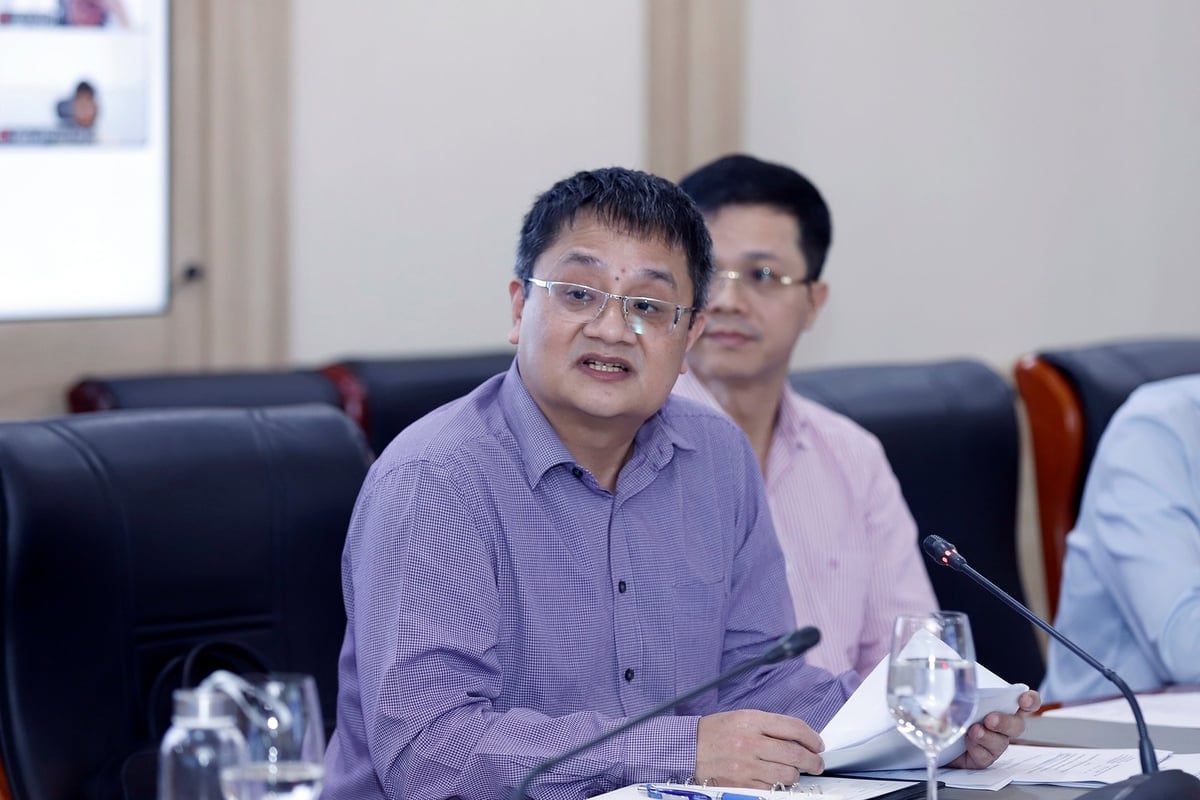
Mr. Ngo Hong Phong, General Director of the National Authority for Agro-Forestry-Fishery Quality, Processing and Market Development delivers a report on the agricultural trade situation between Vietnam and the U.S. Photo: Khuong Trung.
Currently, although the reciprocal tariff rate stands at 46%, its application varies by industry. Therefore, it is essential to conduct a more detailed analysis and assessment of the specific tariff rates that will be imposed on each of Vietnam’s agricultural, forestry, and fishery export products to the U.S.
Regarding proposed solutions, Mr. Ngo Hong Phong stated that, in the immediate term, it is necessary to provide timely information and create favorable conditions (in terms of logistics, customs procedures, etc.) to help businesses accelerate shipments before the April 9, 2025 deadline - and as early as possible within the next 1-3 months. In addition, businesses and associations should proactively communicate with importers and partners to develop appropriate solutions for handling existing contracts, sharing responsibilities when facing additional tariffs.
At the same time, it is necessary to continue considering solutions to address the concerns raised by the U.S. side, and to strengthen the control of product origin to avoid accusations of origin fraud involving goods from China. It is also important to evaluate the final option of proposing a zero-percent tariff.
In the long term, Mr. Ngo Hong Phong, General Director of the National Authority for Agro-Forestry-Fishery Quality, Processing and Market Development emphasized the need to shift export markets toward countries that have Free Trade Agreements (FTAs) with Vietnam, in line with market capacity criteria, such as China or European countries.
The Department’s proposed market redirection priorities by product category are as follows: Wood and wood products: Japan, China, EU; Seafood: China, Japan, EU, South Korea; Cashew nuts: EU, China, UAE, UK; Pepper: EU, UAE, India, China; Fruits and vegetables: China, South Korea, EU, ASEAN; Coffee: Germany, Italy, Japan
The Minister stated that in recent days, the Party, State, and Government have implemented various flexible measures to respond to changes in the U.S.' tax policy. Although ministries and sectors had thoroughly prepared in advance and developed contingency plans, the newly announced high tariffs still came as a surprise to many businesses. In fact, even within the U.S. itself, there are differing opinions on this policy, making future developments unpredictable.
This is not merely a tariff issue - the policy also touches on factors such as the bilateral trade imbalance, non-tariff barriers, and other elements that the U.S. understands very clearly. As a result, many American businesses and trade partners have had to suspend or cancel contracts with Vietnam.
Although the Government has made every effort to provide support, Minister Do Duc Duy emphasized the need to always prepare for the worst-case scenario. This includes ongoing discussions and persuasion efforts with U.S. representatives in Vietnam.
Faced with this major challenge, the Government and relevant ministries have adopted a guiding approach: remain calm and flexible, stay grounded in reality, stand alongside businesses, and proactively engage in negotiations.
“Vietnam’s standpoint is not to confront, but to seek comprehensive and long-term solutions, with a particular focus on negotiations,” the Minister affirmed.
The Government always stands by businesses and will continue to listen and contribute ideas to find practical solutions. Unity and consensus for the common good of the sector and the nation will be crucial during this difficult period.
In negotiations with the U.S., Vietnam needs to capitalize on its inherent advantages in agriculture: high-quality products, competitive pricing, non-direct competition with U.S. domestic production, and many items for which there are no substitutes.
Furthermore, challenges should be viewed as opportunities to restructure production, industries, and export markets. This is a timely moment to promote the development of high value-added products and shift toward a more sustainable, higher-quality production model. The U.S. remains one of the largest, most promising markets with high profit margins for Vietnamese agricultural products.
The Minister stated that the Ministry of Agriculture and Environment has been and will continue to implement solutions as directed by the Government. Negotiations with U.S. partners such as the U.S. Department of Agriculture and the U.S. Embassy in Vietnam will be actively pursued to find common ground with the U.S. Government.
Notably, the Ministry will direct localities, businesses, and farmers to maintain their production plans without changes for the time being. At the same time, it will support enterprises in seeking alternative markets and continue to gather feedback and recommendations from businesses and associations to submit to the Government.
Additionally, the Ministry will review technical barriers related to both agricultural exports and imports, especially for agricultural products from the U.S. It will also work with enterprises to research and develop input supply industries for agriculture, such as animal feed and plant protection products, in order to reduce input costs. At the same time, it will encourage deep processing, production restructuring, improved storage capacity, and enhanced competitiveness of Vietnamese goods.
Translated by Kieu Chi
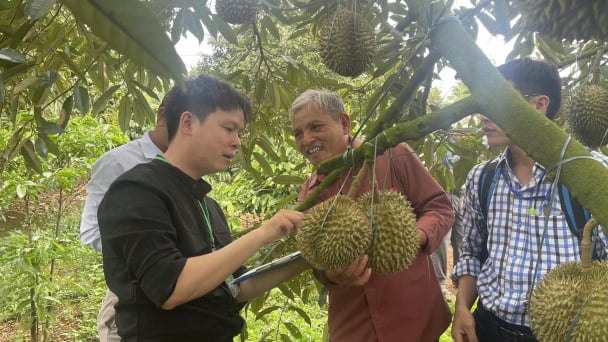
(VAN) For the durian industry to succeed, the value chain must fulfill its commitments to the government, the community, and international partners.
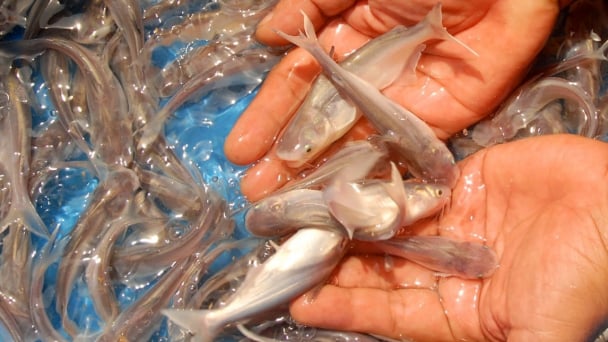
(VAN) Vaccinating juvenile pangasius helps reduce disease, antibiotic use, and farming costs, increasing profits for export-oriented farmers in An Giang.

(VAN) Due to a limited supply of workforce and competitive recruitment requirements, businesses struggle to retain talented veterinary human resources.
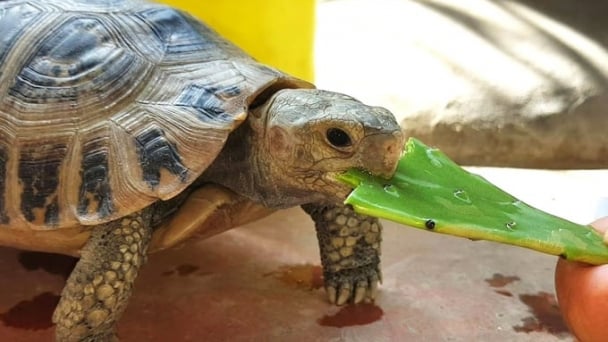
(VAN) WOAH’s guidance aims to mitigate disease risks through a One Health approach that balances economic, conservation, and public health interests.

(VAN) Ms. Nguyen Thi Dung, Deputy Director of Ngoc Hoang Cooperative, shared about the journey of bringing dragon fruit to Europe, achieving annual revenues in the billions of VND.

(VAN) Bamboo products from Thang Tho Bamboo Cooperative have reached many countries around the world, while also creating jobs for local workers.

(VAN) The Management Board of Con Dao National Park reported that a green sea turtle, tagged in the Philippines, has traveled thousands of kilometers to lay 84 eggs on Bay Canh Islet.